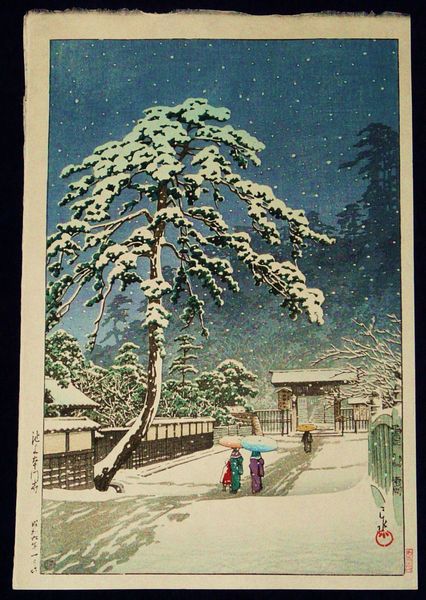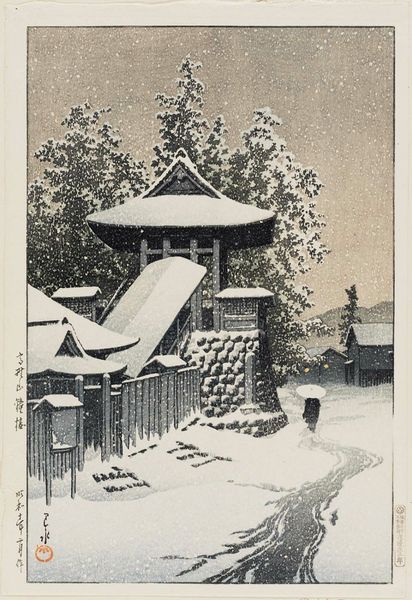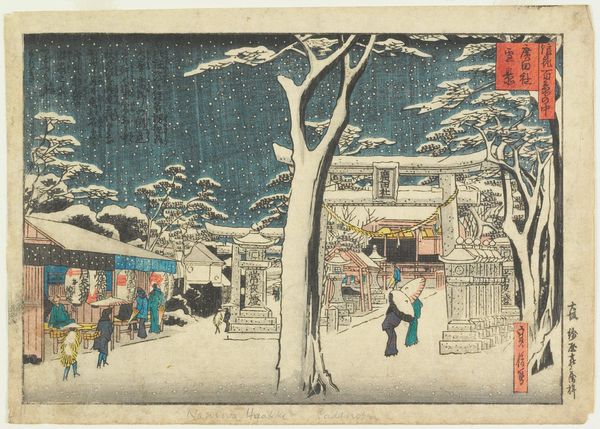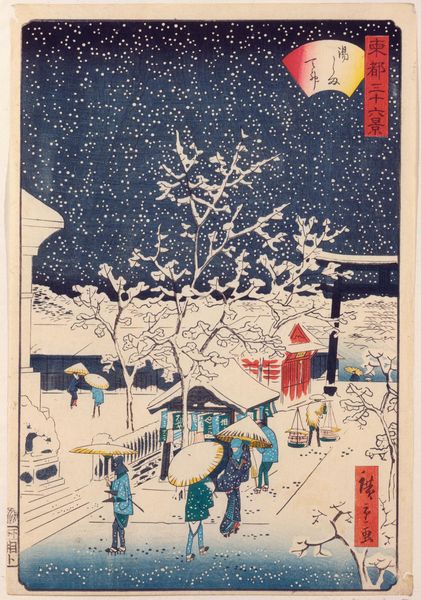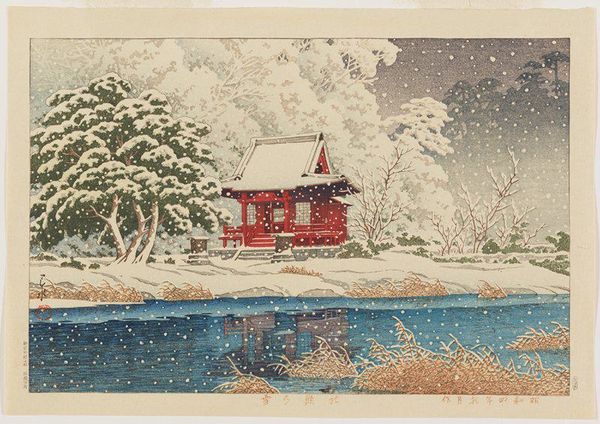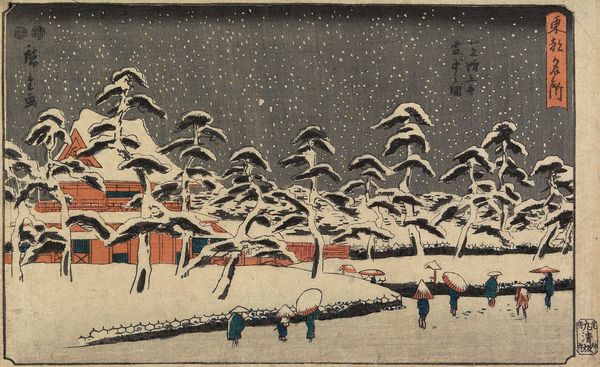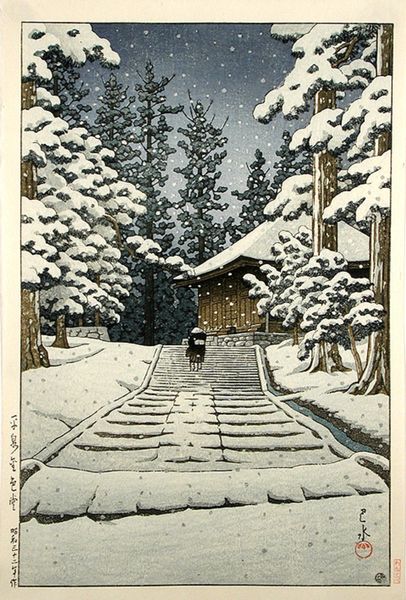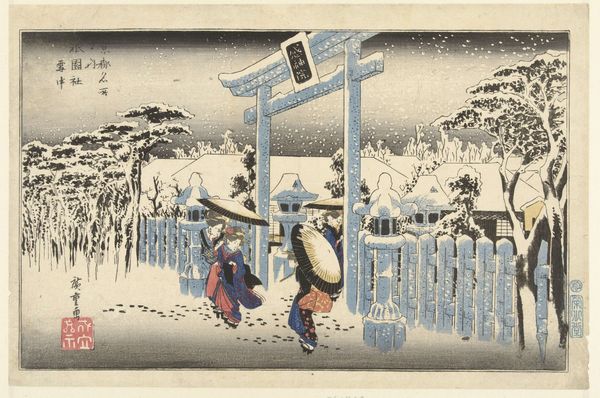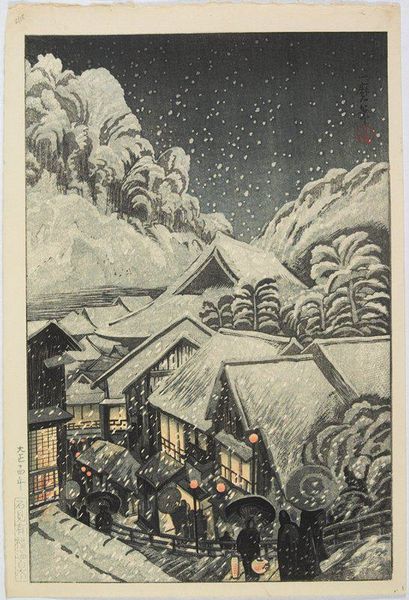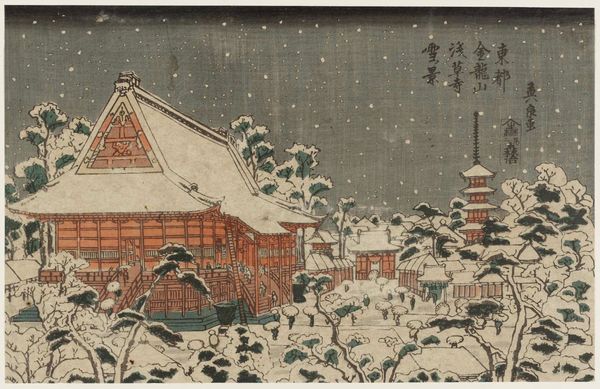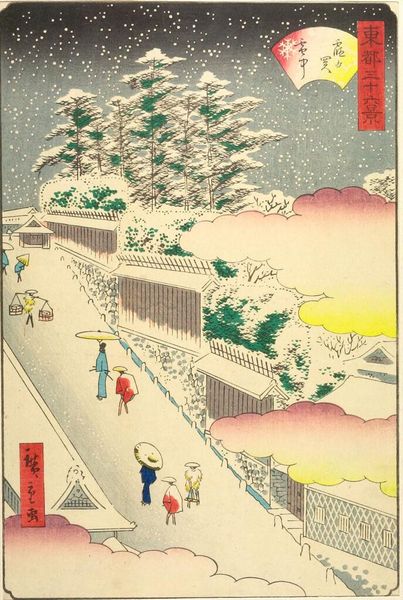
Dimensions: 39.2 x 26.5 cm
Copyright: Public domain Japan
Editor: So, this is Kawase Hasui’s woodblock print, "Ikegami Honmonji," created in 1931. The scene is so serene, blanketed in snow. There’s a sense of quiet solitude, even with the figures walking down the path. What do you see in this piece? Curator: This work offers a powerful commentary on the shifting cultural landscape of Japan in the early 20th century. The composition, steeped in the Ukiyo-e tradition, juxtaposes the traditional architectural elements of the temple with figures who seem to navigate both the sacred space and the weight of modernity. Note the shadows; they imply presence and past oppression through traditional authority, even in the face of the blanketing purity of the snow. What might that snow symbolize? Editor: Perhaps a fresh start or the covering up of past events? The way it softens all the edges makes me think of societal changes. Curator: Precisely! Think about the role of landscape in constructing national identity. The depopulation of rural areas because of urbanization was deeply disrupting; this image evokes a certain tension. Does it celebrate nature or mourn its loss? How are women in this landscape represented, and what might it convey about gender and tradition? Editor: The women feel almost incidental. Maybe their presence suggests daily life continues amidst these larger societal shifts, but they’re not really centered in the image. Curator: Exactly! This highlights the role of women and underrepresented peoples during massive cultural change, and how those transformations can play out differently. This print invites us to examine not just what is seen, but whose stories are amplified and whose are obscured in the representation of “national identity” during transition periods. Editor: That’s fascinating! I hadn’t considered the questions of representation in relation to these bigger power dynamics at play in what looks like just a landscape. Curator: Indeed. Hopefully this print will lead others to see that there are no innocent or natural landscapes and that everything has social context that can oppress and undermine entire communities. Editor: Thanks so much! That provides a much richer, more meaningful way to appreciate the art.
Comments
No comments
Be the first to comment and join the conversation on the ultimate creative platform.
